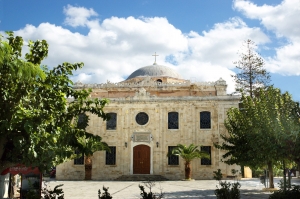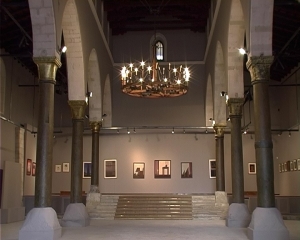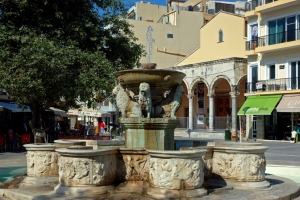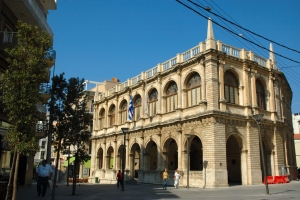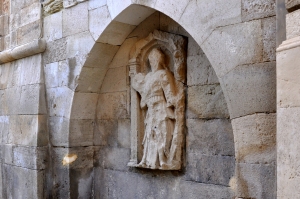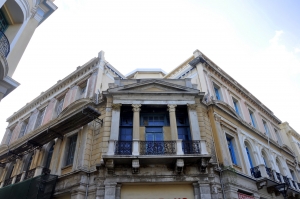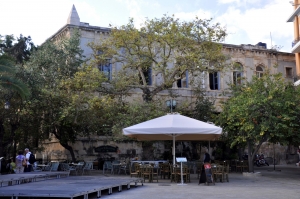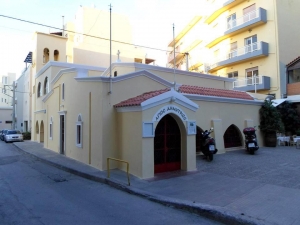During the second Byzantine period, as the largest and prime official church in the city of Chandax, St. Titus became the seat of the new Orthodox Diocese of Crete. The Venetians later installed a Catholic archbishop and converted the church into a Catholic cathedral.
The Municipal Gallery of Heraklion is hosted in the Basilica of Saint Mark in the center of Heraklion, just opposite the famous Lions’ fountain. The basilica was built by the Venetians in 1239, was destroyed by an earthquake in 1303 but restored immediately,
The fountain of Morozini (known as Lions) is one of the nicest Venetian monuments of Candia (current Heraklion). The fountain was watered by the spring of Karidaki and the watered traveled about 15km in a gigantic aqueduct, one of the longest in the then world.
The Venetians used to build a luxurious building in each of their cities, where the nobles could pleasantly spend their time and socialize. In Candia, they built the Loggia (meaning Noble Club) which is now met on the August 25 street.
The fountain that we meet today in the north wall of the Venetian Loggia was built by the Duke Jiovani Sagredo during 1602-1604 to serve the nobles who were gathered in the Loggia.
The “Liopyrakis Megaron” is undoubtedly the most important sample of the romantic neoclassical style in Heraklion. It is a work of the architect Dimitris Kyriakou. Its construction began at the end of the first decade of the 20th century. It was one of the most luxurious mansions that were constructed in the first two decades in a very central street, the 25th of August Avenue.
The Venetian armoury (Armeria or Armarento) is situated between the Loggia and St. Titus Square. Although it served a different purpose than the noble's club, the two buildings formed a single complex.
The Church of Saint Demetrius near the Venetian harbor of Heraklion is built on the site of an older church of St. Demetrius, who was the patron saint of the carpenters of Heraklion during the Venetian era (every profession then had its patron saint!). The only surviving part of the initial church is a part of frescoes inside the sanctuary.















